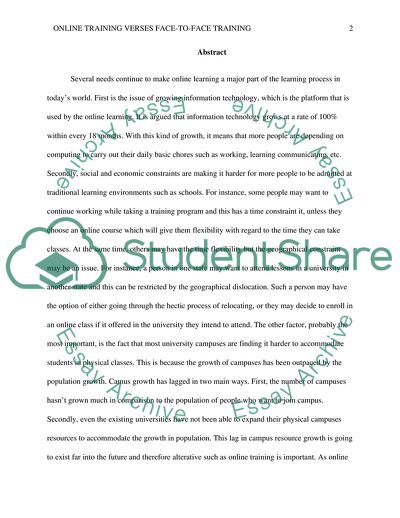Cite this document
(Effectiveness of Online Training Versus Traditional Face-to-Face Training Literature review Example | Topics and Well Written Essays - 3000 words, n.d.)
Effectiveness of Online Training Versus Traditional Face-to-Face Training Literature review Example | Topics and Well Written Essays - 3000 words. https://studentshare.org/education/1835930-signature-assignment
Effectiveness of Online Training Versus Traditional Face-to-Face Training Literature review Example | Topics and Well Written Essays - 3000 words. https://studentshare.org/education/1835930-signature-assignment
(Effectiveness of Online Training Versus Traditional Face-to-Face Training Literature Review Example | Topics and Well Written Essays - 3000 Words)
Effectiveness of Online Training Versus Traditional Face-to-Face Training Literature Review Example | Topics and Well Written Essays - 3000 Words. https://studentshare.org/education/1835930-signature-assignment.
Effectiveness of Online Training Versus Traditional Face-to-Face Training Literature Review Example | Topics and Well Written Essays - 3000 Words. https://studentshare.org/education/1835930-signature-assignment.
“Effectiveness of Online Training Versus Traditional Face-to-Face Training Literature Review Example | Topics and Well Written Essays - 3000 Words”. https://studentshare.org/education/1835930-signature-assignment.


